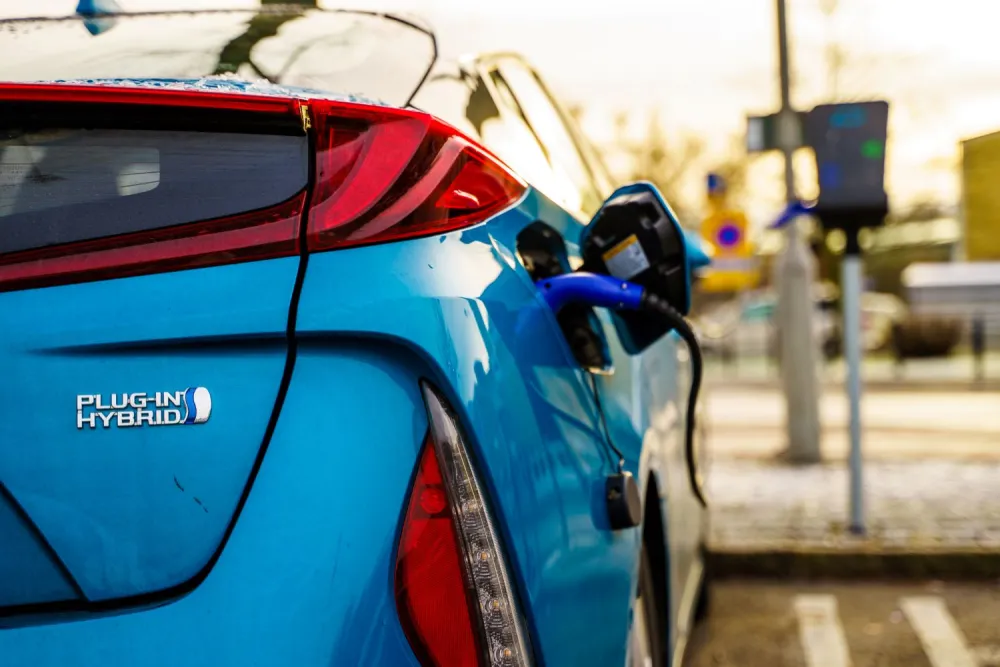Consider the plug-in hybrid electric vehicle. In a sense, plug-ins operate in a climate policy grey zone: far less carbon-intensive than a car powered entirely by fossil fuels but not emission-free like battery-electric vehicles. Consequently, policy makers and advisors are divided on how to categorize the plug-in hybrid (PHEV) and the extent to which sales of PHEVs should be encouraged – or not.
Recent federal regulations, which would see an end to sales of gas fuelled cars by 2035, reward automakers for manufacturing electric cars through a credit system, under which a single credit is issued for every electric car sold. The same regulatory regime includes PHEVs as a (sort of) electric vehicle (EV) and manufacturers earn partial credits per hybrid produced due to a plug-in's shorter electric driving range. As a compliance mechanism, automakers must earn a total number of credits each year.
Some camps argued against awarding credits, partial or otherwise, for plug-in hybrids — being a little bit electric isn't, after all, the end game. While it’s true that the road to net-zero transportation is battery-powered, PHEVs are still key to a transportation transition away from internal combustion passenger cars, and automakers should continue to earn credits up to and beyond 2035.
Here are the five reasons why we embrace plug-in hybrid vehicles:
1. Change is hard
In surveys conducted by Natural Resources Canada and others, the majority of respondents — more than 60% in the Natural Resources Canada initiative — expressed a preference for PHEVs over battery electric vehicles because of the flexibility of dual power sources (gasoline and electric). Polling has consistently demonstrated a high degree of reluctance on the part of consumers to make their next vehicle purchase an EV. The same group of respondents, however, express a willingness to make their next purchase a hybrid. Given the level of resistance felt toward all-electric cars, demand for hybrids will likely persist for some time to come. It is also possible that hybrid drivers will be more amenable to EVs once they’ve become more comfortable with the technology.
2. Price sensitivities
A policy such as the Electric Vehicle Availability Standard, by virtue of its inclusion of PHEVs as a type of vehicle that meets the regulatory criteria and earns a partial credit in exchange, is considered “technology-neutral.” In other words, an auto manufacturer or importer can produce either a battery-powered car or a hybrid and still be in compliance with the regulations.
Technology-neutral policies are typically cheaper to implement relative to technology-forcing/specific policies. In this instance, automakers have the flexibility to follow the most cost-effective technology pathway. For example, producers with expertise in producing PHEVs (arguably as a function of historical investments in the technology) may find it cheaper to comply with federal requirements by selling PHEVs; others may choose to sell only EVs. Compliance costs are reduced industry-wide by allowing automakers to choose the product that makes the most financial sense and still meets regulatory requirements.
3. Canada’s climate goals still track
Although the federal government does not assign sector-specific emissions reduction targets, we can assess the progress of existing transport policies by assuming that the economy-wide targets — i.e., lowering carbon emissions by 40% to 45% relative to 2005 levels by 2030 — apply uniformly to all economic sectors, including transportation.
Our analysis based on this assumption shows that the current EV sales regulations where PHEVs constitute a 10% share of the ZEV total will drive down carbon emissions from passenger cars in line with the 2030 climate goal. Post 2030, emission levels would drop incrementally more (3% more) if PHEVs were no longer part of the ZEV sale mix.
An argument can be made that PHEVs fail to maximize the amount of greenhouse gas emissions that could be prevented from entering the atmosphere due to a low “utility factor,” that is, drivers of plug-ins don’t plug in, choosing instead to simply switch to gas power. Currently, PHEV owners run their cars on electricity only 40% of the time (compared to 70% in Norway where zero-emission cars make up more than 80% of new vehicle sales and PHEVs occupy 7% to 8% of new market share sales).
Still, under a scenario where the utility factor rises to 50%, Canada is on track to achieve its 2030 emission reduction milestone. The utility factor can be expected to increase within the next few years as the number of chargers per capita increases. At the same time, consumers will quickly discover the financial benefit of using electricity over gasoline, the former being considerably less expensive than the latter, not to mention affording relief from the price volatility of fossil fuels.
With PHEVs limited to approximately 10% of ZEV share in sales, any impact on the effectiveness of EV regulations in lowering carbon emissions is negligible.
4. So many EVs, so few chargers
The deployment of charging infrastructure is picking up speed but has yet to come close to the number required to meet anticipated demand. As much as 40% of Canadians live in multi-unit residential buildings without access to private chargers and must instead rely on public charging stations. The current deployment of 27,000 chargers is well short of the estimated 450,000 public chargers (including both slow and fast chargers) needed by 2035.
In the absence of a charging network that can meet anticipated demand, PHEVs work well as a transition vehicle that can advance the transportation sector away from sole dependence on fossil fuels without being impeded by the slow rate of charger installation. PHEVs are likewise well suited for people living in rural communities. A combination of factors — the dearth of public chargers, low population density, and lingering uncertainty that an EV is fully operational under extreme weather conditions — make it particularly difficult to electrify road transportation in remote communities in the near term. Here too, PHEVs can be a substitute for battery-electric, as PHEVs have no range constraints, and work as well as internal combustion engine vehicles in cold weather.
5. Demand for critical minerals
Critical minerals such as lithium are needed to make batteries for EVs, and demand for these minerals is rising rapidly. Our modelling indicates that demand for lithium in Canada will jump to 25,000 tonnes by 2035. Canada’s current annual production of 500 tonnes of lithium would have to increase many times over — but far more likely is that the demand will be met through imports. Considerably less lithium is used in plug-in hybrids, which have a smaller battery. Demand for lithium could shrink by as much as 7% relative to a scenario where all ZEVs are battery-electric cars. An EV regulatory regime that includes some proportion of PHEVs can help moderate escalating demand for critical minerals and thus inject more certainty that Canada will meet the 2030 emission reduction levels.
Gateway car
EVs will play a dominant role in helping Canada achieve deep reductions in greenhouse gas emissions generated in the light-duty vehicle sector. Even so, there are compelling reasons for retaining diversification in the market to include plug-in hybrid electric vehicles among battery-electric ones. Provided that PHEVs make up an appropriate share of the electric vehicles sold, the advantages far outweigh concerns about their inclusion in the federal government’s EV policy.








